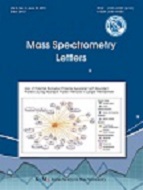
- P-ISSN 2233-4203
- E-ISSN 2093-8950

The Korean government has regulated emissions of polychlorinated dibenzo-p-dioxins and dibenzofurans (PCDD/Fs)in waste water of manufacturing facilities producing chlorinated compounds since 2009. As this regulation has been reinforcedin 2013 to 50 pg I-TEQ/L, a large sample volume is required for the analysis of trace amounts of PCDD/Fs in waste water. Liquidliquidextraction (LLE) is used to extract PCDD/Fs from aqueous samples. However, its low efficiency makes it inadequate foranalyzing large sample volumes. Here, a disk-type solid-phase extraction (SPE) method was applied to the analysis of dioxin ata part per quadrillion level in waste water. This SPE system contains airtight glass covers with a decompression pump, whichenables continuous semi-automated extraction. Small (0.5 L) and large (7 L) samples were extracted using LLE and SPE methods,respectively. The method detection limits (MDLs) were 0.001-0.25 and 0.015-4.1 pg I-TEQ/L for the SPE and LLE methods,respectively. The concentrations of detected congeners with both methods were similar. However, the concentrations of severalcongeners that were not detected with the LLE method were quantified using the SPE method.
Huff, J. E.. (1980). . Environ. Health Perspect, 36, 221-.
Poland, A. (1982). . Annu. Rev. Pharmacol. Toxicol, 22, 517-.
Pohjanvirta, R. (1994). . Pharmacol. Rev, 46, 483-.
Birnbaum, L. S. (2000). . J. Food Addit. Contam, 17, 275-.
Alaluusua, S. (2004). . Environ. Health Perspect, 112, 1313-.
Steenland, K. (2004). . Environ. Health Perspect, 112, 1265-.
Hester, R. E.;. (1996). Chlorinated organic micropollutants:The Royal Society of Chemistry.
Gribble, G.W. (1994). . Environ. Sci. Technol, 28, 310A-.
Hashimoto, S. (1990). . Chemosphere, 21, 825-.
Ministry of Environment, Republic of Korea. Persistent Organic Pollutant Special Management Law.
Meyer, C. (1989). . Chemosphere, 19, 21-.
Rappe, C. (1989). . Chemosphere, 19, 13-.
Campoy, C. (2001). . Ear. Hu. Dev, 65, S183-.
Jeannot, R. (2000). . J. Chromatogr. A, 879, 51-.
Pujadas, E. (2001). . Chemosphere, 43, 449-.
Choi, J. W. (2007). . J. Chromatogr. A, 1157, 17-.
North Atlantic Treaty Organization. (1988). Committee on the Challenges of Modern Society (NATO/CCMS). .
JIS K0312, Method for determination of tetra- through octa-chlorodibenzo-p-dioxins, tetra- through octachlorodibenzofurans and coplanar polychlorobiphenyls in industrial water and waste water.
EPA Method 1613, Tetra- through octachlorinated dioxins and furans by isotopic dilution HRGC-HRMS.